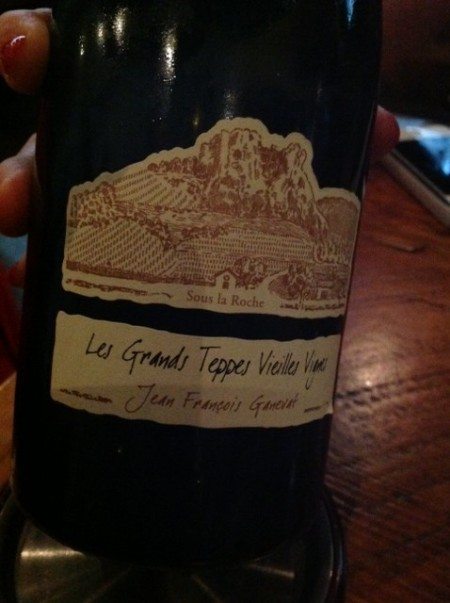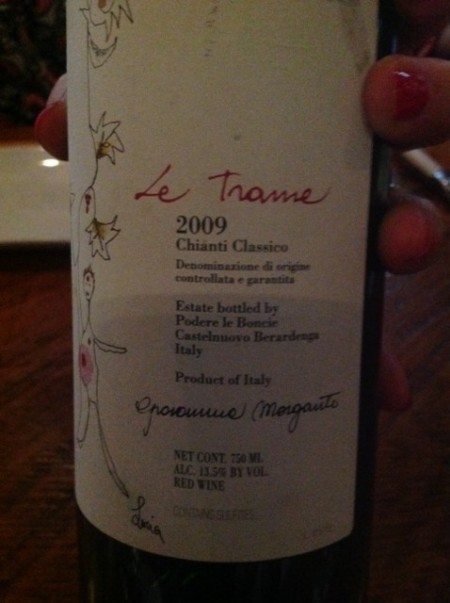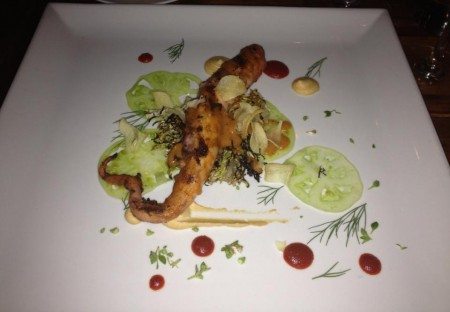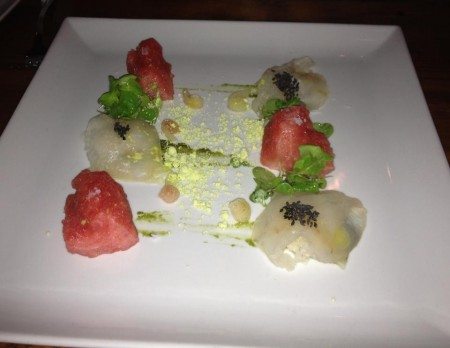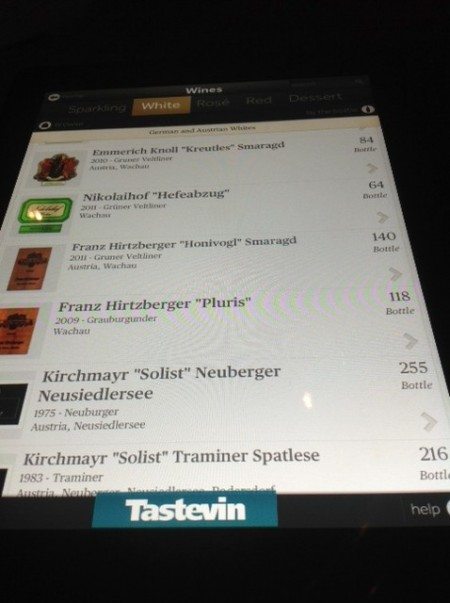Rocky Mountain views, not food and wine, were my stalwart moments of inspiration and calm during nine years of heavy business travel to Denver. Any remarkable dining here always tracked towards healthy or comfortable, nothing too fancy nor too smart. Chefs and sommeliers seemed to carefully avoid even the slightest nod to over reaching, potentially offensive sophistication that could turn off crunchy clientele. It was easy to find a good meal, but impossible to immerse in a pinnacle food and wine session at the end of a long, hard, oxygen starved day.
Look west of Denver’s skyline for inspiration no longer; Old Major has erupted as the city’s very own downtown fourteener, a surprising giant sans demanding two hour schlepps up the hill in chains and four wheel drives. “Surprising” because Old Major’s homage to food and wine detail stands taller than all of Denver’s extant top eateries (with the possible exception of Frasca in Boulder) combined.
Was it the 2010 Ganevat Chardonnay or 2009 Le Trame?
These two wines could be the most compelling examples of Chardonnay and Chianti I have ever experienced. So, I’ve been running through the entire meal just to make sure that “Denver’s New Best” is not really just about two very fussy winemakers from the Jura and Tuscany inside an overly familiar charcuterie and pig themed menu. I am reassured that in this citified Rocky Mountain base-camp, Old Major is much more than just another “nose to tail butchery” orchestrated by “friends of farmers and fishermen”; nor simply two bottles of memorable benchmark wine. It turns out that Bon Appetit has nominated Old Major as one of the top 50 new restaurants in the country. Here are pictures of a sampling of the dishes that charmed us (taken by one of my dinner guests) so you can see what I mean about the Old Major Denver food revolution:
Grilled Octopus
Chilled Crab and Corn Soup
Fluke Crudo
Foie Gras Desert
Now, back to those wines. The Old Major iPad wine list seemed designed for my palate. Go ahead, click on that list, and see how thoughtful it is. I was about to order 2007 Domaine du Closel Clos du Papillion just to kick the evening off when Bruce Conklin, Old Major’s highly capable sommelier showed up at the table. We talked and walked through the list.
Within moments, we were sipping **½ $20 Francois Pinon Brut Rosé from Touraine. Hints of strawberry and currant danced on our palates supported by crispy, yeasty spritz. I wish I had this wine in my working cellar up at the lake this summer. We would have consumed a case of it.
Time to get serious, Bruce pointed me towards the ***** 2010 Ganevat Les Grands Teppes Vieilles Vignes. Old vine Jura Chardonnay planted in 1920, it will last in my wine memory bank as one of the finest Chardonnays I have ever experienced. I have tried some of Ganevat’s Savignin and other Jura fruit blends, but never this Chardonnay. A lot has been written about Jean Francois’ micro farming and elevage orientations, bottling close to 50 different barrels of wine separately from a small 7 hectares of vineyards. Kermit Lynch has the import line on these wines that are designed to protect the unique aspects of their tiny unique terroirs, and points out the wines sit on their lees between two and ten years before bottling, avoiding the more familiar Jura oxidized style. This wine, in particular, was pure and impeccably balanced, pointed enough to dance on the tip of a needle. Crisp pineapple and lemon richness found its way into an ultra light weight profile. It sat in your mouth like it was designed to be there. Aromas of fresh, warm, candied pecans were abundant.
The pleasure this wine offers is actually indescribable. I had this thought, strange as it sounds, that if Helen Turley took tranquilizers and muscle relaxers, she just might be able to produce this style Chardonnay where you can actually drink the wine with food and appreciate the real character of Chardonnay fruit at the same time. Ganevat, through his idiosyncratic fussiness, has created a wine here that no serious wine drinker can really afford to ignore. It is perfect.
Next up was my test for the evening. I can rarely guess lots about a blind wine on first try. This was another example of that, but I pleased myself nonetheless. I suspected Chenin Blanc from the Loire, but knew there was this herbaceous line in the nose that said something different. Bruce told me I was close, and I quickly shifted the guess to Romorantin and Cour-Cheverny. Bingo, and man was I proud of myself. It’s a pretty obscure grape only grown in Cour-Cheverny, and like I said, I never guess right. This ***½ $20 2011 Cazin Cuvée Renaissance Cour-Cheverny from 80 year old vines had some barrel time added that helped it lose some of its inherent Romorantin angular cut. It added a little weight without disguising the sparkling forceful acidity I love in Cour-Cheverny. It is well worth finding some more at $20.
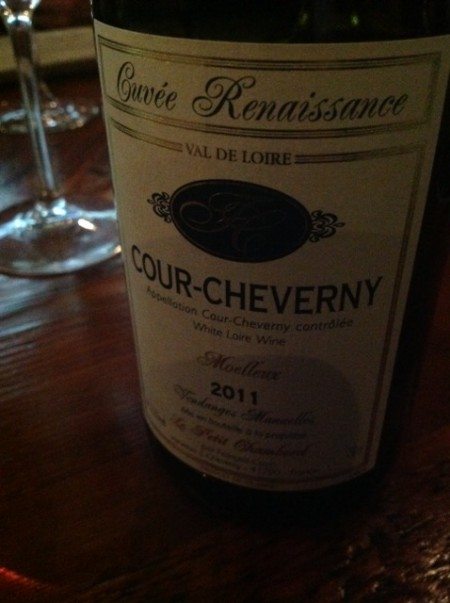 Our remarkable wine evening did not end here. Bouncing from Kermit Lynch to Louis Dressner and now to Neal Rosenthal wine, I was introduced to the work of Giovanna Morganti who produces this wine in abidance with biodynamic guidelines on her three hectare Tuscan estate.
Our remarkable wine evening did not end here. Bouncing from Kermit Lynch to Louis Dressner and now to Neal Rosenthal wine, I was introduced to the work of Giovanna Morganti who produces this wine in abidance with biodynamic guidelines on her three hectare Tuscan estate.
The **** $37 2009 Le Trame Chianti Classico avoids a lot of the characteristics that keep me from drinking more Chianti. Bruce noted it reminds him of old time Chianti, before the big fruit profiles disguised what Chianti is all about. I can’t appreciate his point of view, since I do not drink a lot of this kind of wine, mostly put off by the missing mid palates of so many Sangiovese based wines. But the exotic Le Trame could change all that. Dusty, smoky, black cherry wraps into this gorgeous, pure, silky, light weight, restrained, sexy wine that has a long and lasting finish. The nose is fully stoked from just enough bret for me, and the combination of sweaty animal aromas with pure dark red fruit crafted into an elegant light weight wine made me weak. This wine, at under $40, is something else.
Sometimes I will drink a wine and know that I do not want to go through life without tasting it again. Occasionally that happens with restaurants too, craving another shot at them right after the meal ends. Old Major, 2010 Ganevat Les Grands Teppes Vieilles Vignes Chardonnay, and 2009 Le Trame Chianti Classico are all that and more.
